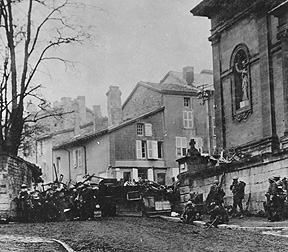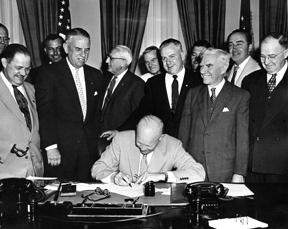36 Little Known Facts About Thanksgiving
- The famous pilgrim celebration at Plymouth Colony Massachusetts in 1621 is traditionally regarded as the first American Thanksgiving. However, there are actually 12 claims to where the “first” Thanksgiving took place: two in Texas, two in Florida, one in Maine, two in Virginia, and five in Massachusetts.d
- President Jefferson called a federal Thanksgiving proclamation “the most ridiculous idea ever conceived.”d
- The famous “Pilgrim and Indian” story featured in modern Thanksgiving narratives was not initially part of early Thanksgiving stories, largely due to tensions between Indians and colonists.d
- Held every year on the island of Alcatraz since 1975, “Unthanksgiving Day” commemorates the survival of Native Americans following the arrival and settlement of Europeans in the Americas.a
- The first Thanksgiving in America actually occurred in 1541, when Francisco Vasquez de Coronado and his expedition held a thanksgiving celebration in Palo Duro Canyon in the Texas panhandle.d
- The turkeys typically depicted in Thanksgiving pictures are not the same as the domestic turkeys most people eat at Thanksgiving. Domestic turkeys usually weigh twice as much and are too large to fly.d
- The average long-distance Thanksgiving trip is 214 miles, compared with 275 miles over the Christmas and New Year’s holiday.c
- Americans eat roughly 535 million pounds of turkey on Thanksgiving.i
- One of the most popular first Thanksgiving stories recalls the three-day celebration in Plymouth, Massachusetts, in 1621. Over 200 years later, President Lincoln declared the last Thursday in November as a national day of thanksgiving, and in 1941 Congress established the fourth Thursday in November as a national holiday.f
- Every Thanksgiving, a group of Native Americans and their supporters gather on Cole’s Hill in Plymouth to commemorate a National Day of Mourning. The flyer for the event in 2006 reads, in part, “Participants in National Day of Mourning honor Native ancestors and the struggles of Native peoples to survive today.”d
- Thanksgiving is an amalgam of different traditions, including ancient harvest festivals, the religious New England Puritan Thanksgiving, the traditional harvest celebrations of England and New England, and changing political and ideological assumptions of Native Americans.d
- Since Abraham Lincoln proclaimed a national Thanksgiving holiday in 1863, Thanksgiving has been observed annually. However, various earlier presidents--including George Washington, John Adams, and James Madison--all urged Americans to observe various periods of thanksgiving.b
- The Pilgrim’s thanksgiving feast in 1621 occurred sometime between September 21 and November 1. It lasted three days and included 50 surviving pilgrims and approximately 90 Wampanoag Indians, including Chief Massasoit. Their menu differed from modern Thanksgiving dinners and included berries, shellfish, boiled pumpkin, and deer.d
- Even though President Madison declared that Thanksgiving should be held twice in 1815, none of the celebrations occurred in the autumn.f
- Now a Thanksgiving dinner staple, cranberries were actually used by Native Americans to treat arrow wounds and to dye clothes.d
- In 2007, George W. Bush granted a pardon to two turkeys named May and Flower. The tradition of pardoning Thanksgiving turkeys began in 1947, though Abraham Lincoln is said to have informally started the practice when he pardoned his son’s pet turkey.g
- When President Franklin D. Roosevelt moved Thanksgiving to the next-to-last Thursday in November to prolong the holiday shopping season, many Republicans rebelled. The holiday was temporarily celebrated on different dates: November 30 became the “Republican Thanksgiving” and November 23 was “Franksgiving” or “Democrat Thanksgiving.”d
- Not all states were eager to adopt Thanksgiving because some thought the national government was exercising too much power in declaring a national holiday. Additionally, southern states were hesitant to observe what was largely a New England practice.d
- In December 1620, the first Pilgrims landed and built their settlement site in the middle of the homeland of Wampanoag people. Several years earlier, a plague brought by Europeans had killed the inhabitants of the village.b
- The pilgrims most likely would not have survived without the help of Tisquantum, or Squanto (c. 1580-1622). Squanto knew English and had already been back and forth across the ocean to England three times (most often as a captured slave). Some historians have suggested that he was later poisoned by the Wampanoag.f
- Sarah Josepha Hale (1788-1879), who tirelessly worked to establish Thanksgiving as a national holiday, also was the first person to advocate women as teachers in public schools, the first to advocate day nurseries to assist working mothers, and the first to propose public playgrounds. She was also the author of two dozen books and hundreds of poems, including “Mary Had a Little Lamb.”b
- Thanksgiving football games began with Yale versus Princeton in 1876.d
- In 1920, Gimbels department store in Philadelphia held a parade with about 50 people and Santa Claus bringing up the rear. The parade is now known as the 6abc IKEA Thanksgiving Day Parade and is the nation’s oldest Thanksgiving Day parade.d
- Established in 1924, the Macy’s Thanksgiving Day Parade ties for second as the oldest Thanksgiving parade. The Snoopy balloon has appeared in the parade more often than any other character. More than 44 million people watch the parade on TV each year and 3 million attend in person.h
- The earliest Thanksgiving in Canada was held in 1578. Martin Frobisher (c. 1535-1594) in Newfoundland held a celebration for arriving safely in the new world. In 1879, Thanksgiving in Canada was set on November 6, though the date still varied considerably. Since 1957, Thanksgiving Day has been held on the second Monday in October.d
- Considered the "Mother of Thanksgiving," Sara Hale (1788-1879) was an influential editor and writer who urged President Lincoln to proclaim a national day of thanksgiving. She selected the last Thursday in November because, as she said, harvests were done, elections were over, and summer travelers were home. She also believed a national thanksgiving holiday would unite Americans in the midst of dramatic social and industrial change and “awaken in Americans’ hearts the love of home and country, of thankfulness to God, and peace between brethren.”d
- Baby turkeys are called poults. Only male turkeys gobble and, therefore, are called gobblers.d
- In 2001, the U.S. Postal Service issued a Thanksgiving stamp to honor the tradition “of being thankful for the abundance of goods we enjoy in America.”b
- Long before the Pilgrims, native Hawaiians celebrated the longest thanksgiving in the world—Makahiki, which lasted four months, approximately from November through February. During this time, both work and war were forbidden.d
- In 2009, roughly 38.4 million Americans traveled more than 50 miles to be with family for Thanksgiving. More than four million flew home.c
- Thanksgiving Day is actually the busiest travel day, even more so than the day before Thanksgiving, as most people believe.c
- Forefather’s Day also celebrates the pilgrims, but it celebrates their landing at Plymouth Rock on December 21, 1620 rather than the plentiful harvest in 1621. It is celebrated on December 21 and usually only in New England. Forefather’s Day was first celebrated in 1769 among a group of pilgrim descendents.d
- The people of the Virgin Islands, a United States territory in the Caribbean Sea, celebrate two thanksgivings, the national holiday and Hurricane Thanksgiving Day. Every Oct 19, if there have been no hurricanes, Hurricane Day is held and the islanders give thanks that they have been spared.d
- Thanksgiving can occur as early as November 22 and as late as November 28.d
- The Friday after Thanksgiving is called Black Friday largely because stores hope the busy shopping day will take them out of the red and into positive profits. Black Friday has been a tradition since the 1930s.e
- Thanksgiving is often considered the site of the first cultural war because it contains both a narrative of the birth of freedom and democracy as well as an account of racism, mistreatment of Native Americans, and conflict.
 “Unthanksgiving Day“ commemorates the struggle for Native American rights
“Unthanksgiving Day“ commemorates the struggle for Native American rights
 Cranberries are only one of three fruits native to America
Cranberries are only one of three fruits native to America
 Tisquantum (Squanto) was a former English slave
Tisquantum (Squanto) was a former English slave
 In 1941, the U.S. Congress sanctioned Thanksgiving as national holiday
In 1941, the U.S. Congress sanctioned Thanksgiving as national holiday
source: http://facts.randomhistory.com/thanksgiving-facts.html





